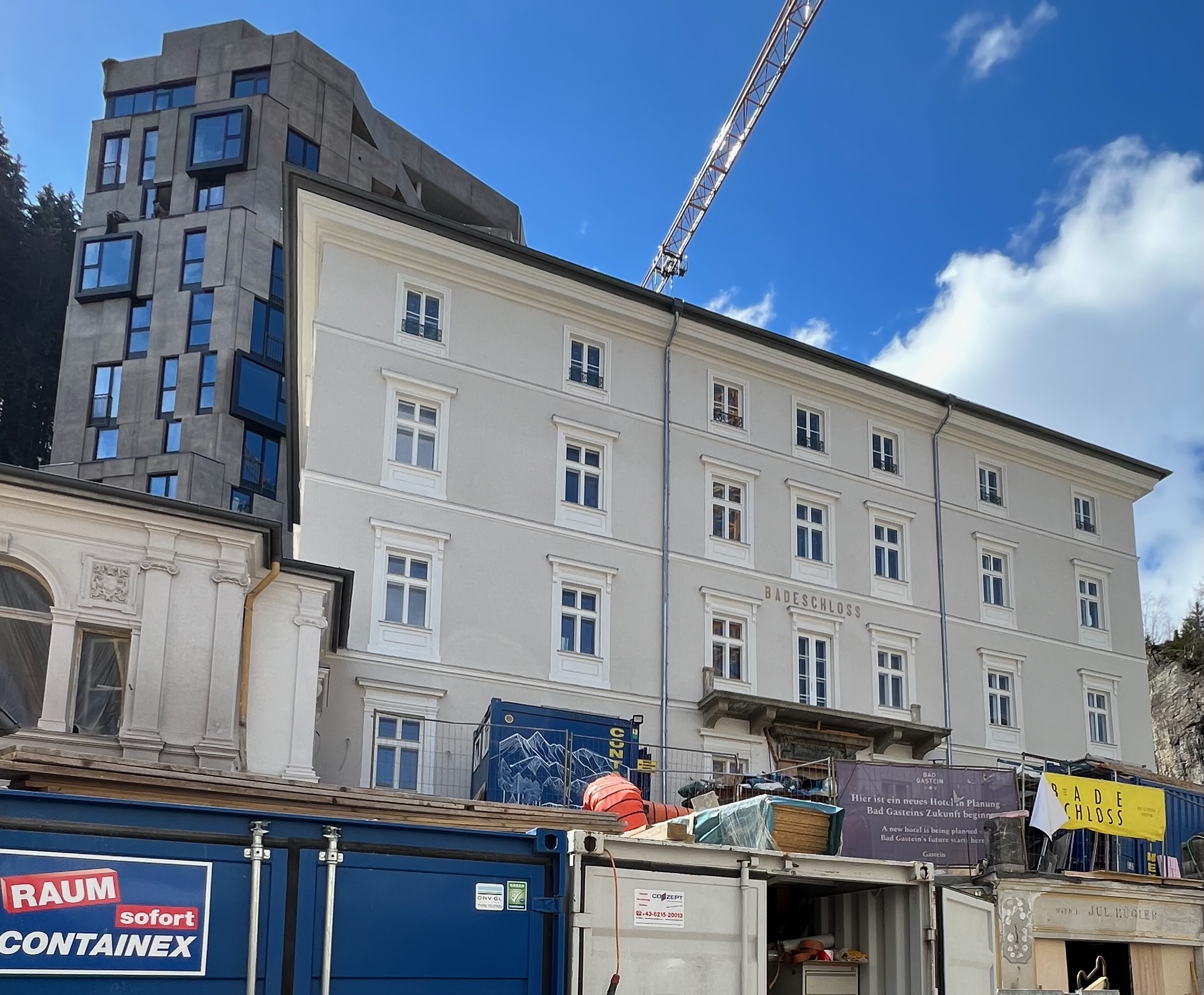
Archaeological finds indicate that the Romans already bathed here when crossing the Alps. The first signs of settlement date back to around 700. Already in the Middle Ages Bad Gastein was known as a spa resort where people sat for hours a day for several weeks playing chess in the communal baths. In 1509, the Straubinger Tavern was built of wood.
For greater bathing comfort, Hieronymus Graf Colloredo had the first stone building erected in Bad Gastein – the Badeschloss.
The Badeschloss with its two-winged staircase was built between 1791 and 1794 according to plans by Wolfgang Hagenauer. The classical portal was built in 1794 to a design by Anton Högl. In 1807 the palace was converted into a public spa. In 1857 the building was demolished up to the first floor and rebuilt. The German Emperor Wilhelm I first stayed here in 1863.
With the opening of the railway line, the town also opened up to the international public from 1905. The town was able to maintain its status as a health resort until after the Second World War.
After the war, there was no money to modernise the prestigious buildings. Spa tourism declined sharply, while the town reinvented itself as a winter sports resort by opening up the surrounding mountains.
The crazy idea from the seventies to make Bad Gastein a destination for international congresses failed. Some of the houses in the old core, on the other hand, could no longer hold on and gradually became ghost houses. Bad Gastein, that was now a bizarre place that towered towards the sky in the middle of the mountains was about to go under.

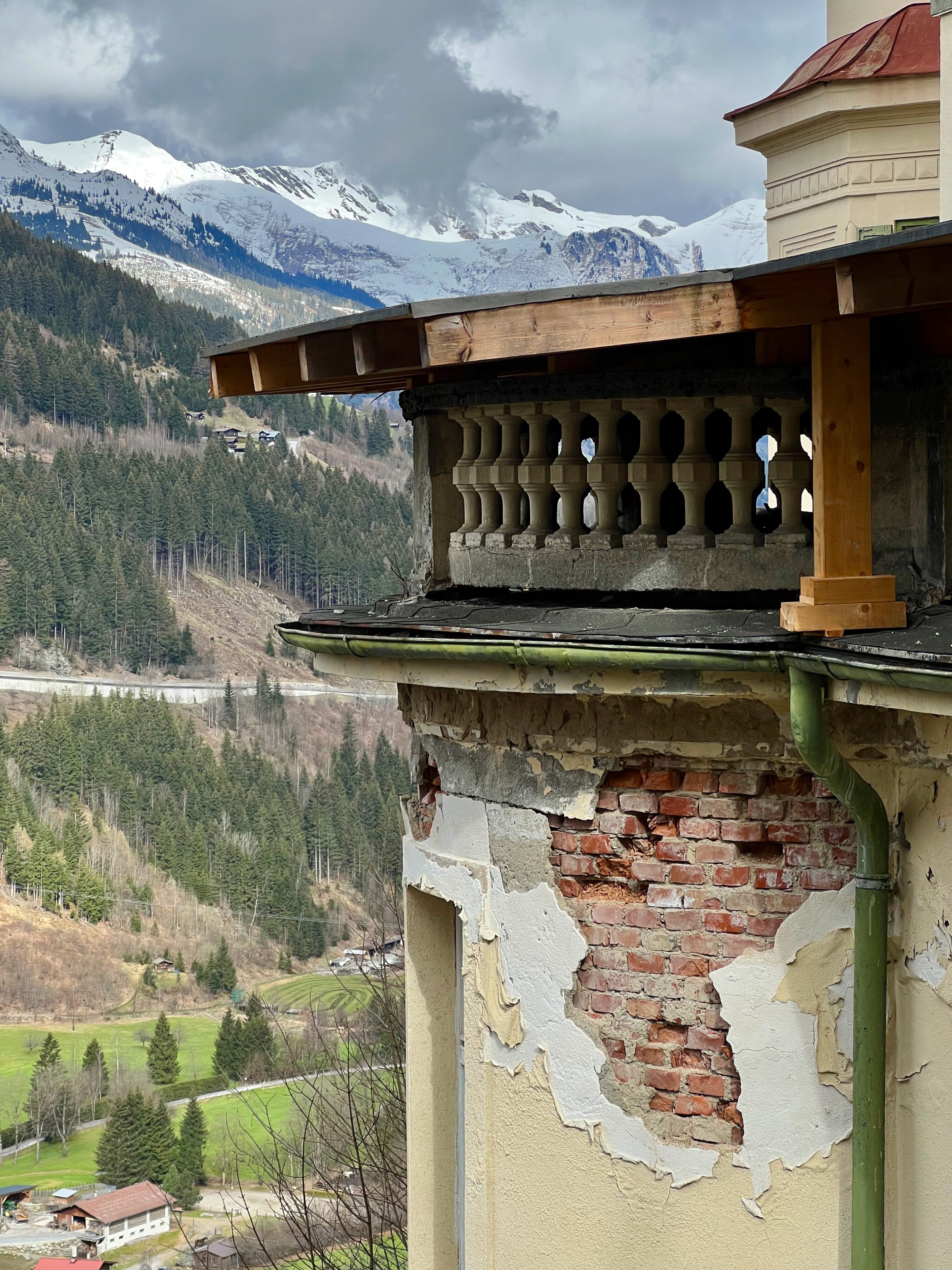
The tables were still set, as if the guests were about to arrive for dinner. The guest book was open. However, no more guests were to come to the Hotel Straubinger in the centre of Bad Gastein for a long time; in 1999 it closed its doors for good.
Almost 20 years later, the Viennese BWM architects entered the time-honoured grand hotel not far from the famous waterfall. They had been commissioned by the new owner, the German Hirmer Group, to revitalise it and found the abandoned hotel as if time had stood still. You get this impression in Bad Gastein on many corners. The place has taken the form of spectacular Belle Époque high-rises arranged on steep slopes around the famous waterfall, which in its heyday earned it the name Monte Carlo of the Alps.
But the once fashionable spa town stumbled decades ago. Some hoteliers lost their footing in the face of the glamorous guests – Falco was here, the Shah of Persia, Liza Minnelli – says a local who, like so many here, does not want to be named. The skyscrapers are spectacular to look at, but the many storeys make them so labour-intensive that they cannot be run economically. People’s holiday behaviour has also changed over the years.
In 1999 came the „saviour of Bad Gastein“, at least that’s how he was advertised: Franz Duval from Vienna and a partner bought five buildings and thus almost the entire centre of the village for five million euros. He did not save the place – on the contrary: he left the houses empty. From the waterfall, one could watch the once magnificent buildings, in which Franz Joseph and the German Emperor Wilhelm I had resided, decay.
There are many explanations in the village as to why Franz Duval, who had made his money with garages in Vienna, never took action. Whether out of revenge, malice or a chain of unfortunate circumstances: the village centre died out. Until the province of Salzburg bought the three buildings from the owner in 2017 for six million euros and sold them on for 7.5 million euros to the German investors.
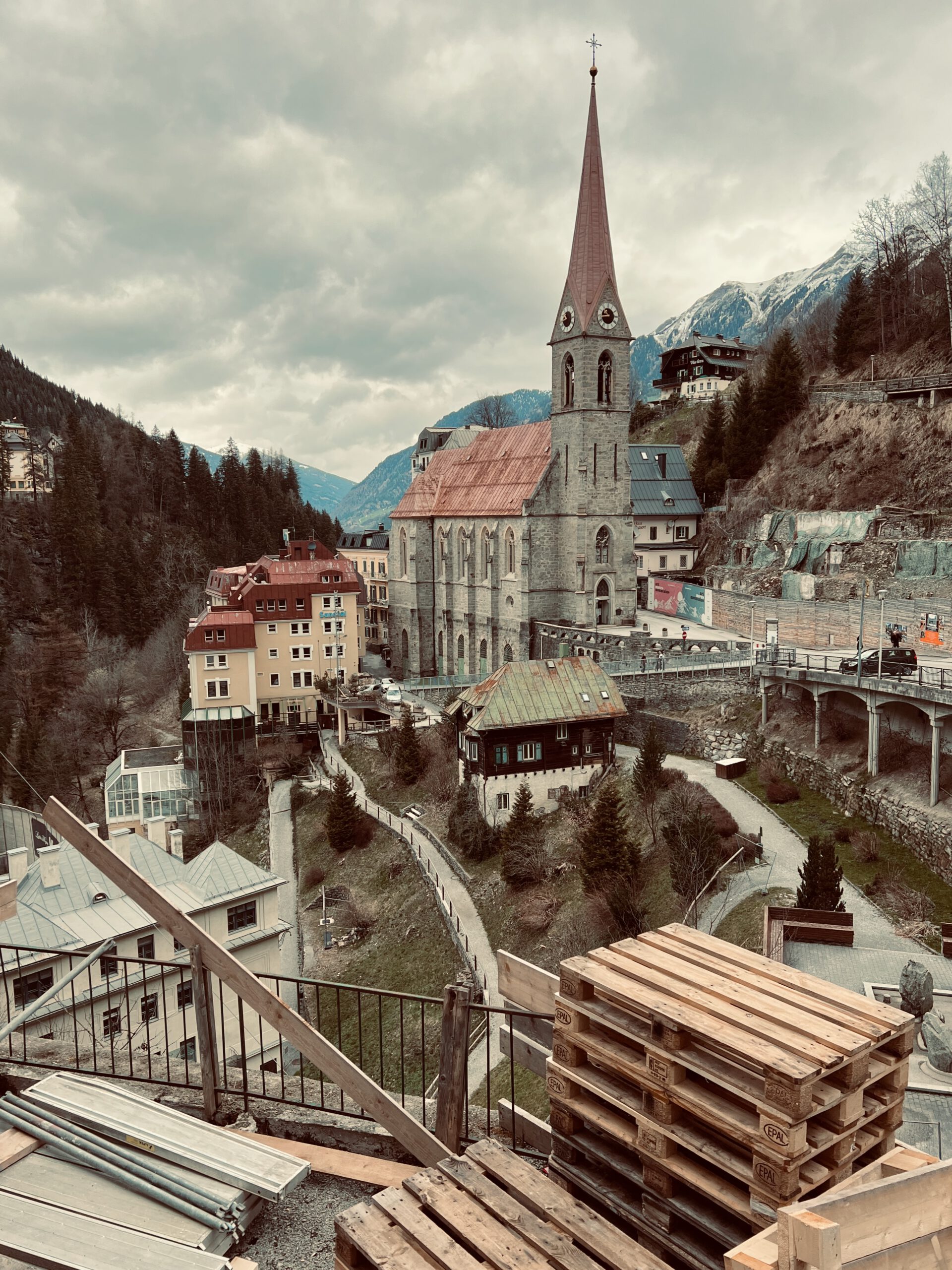
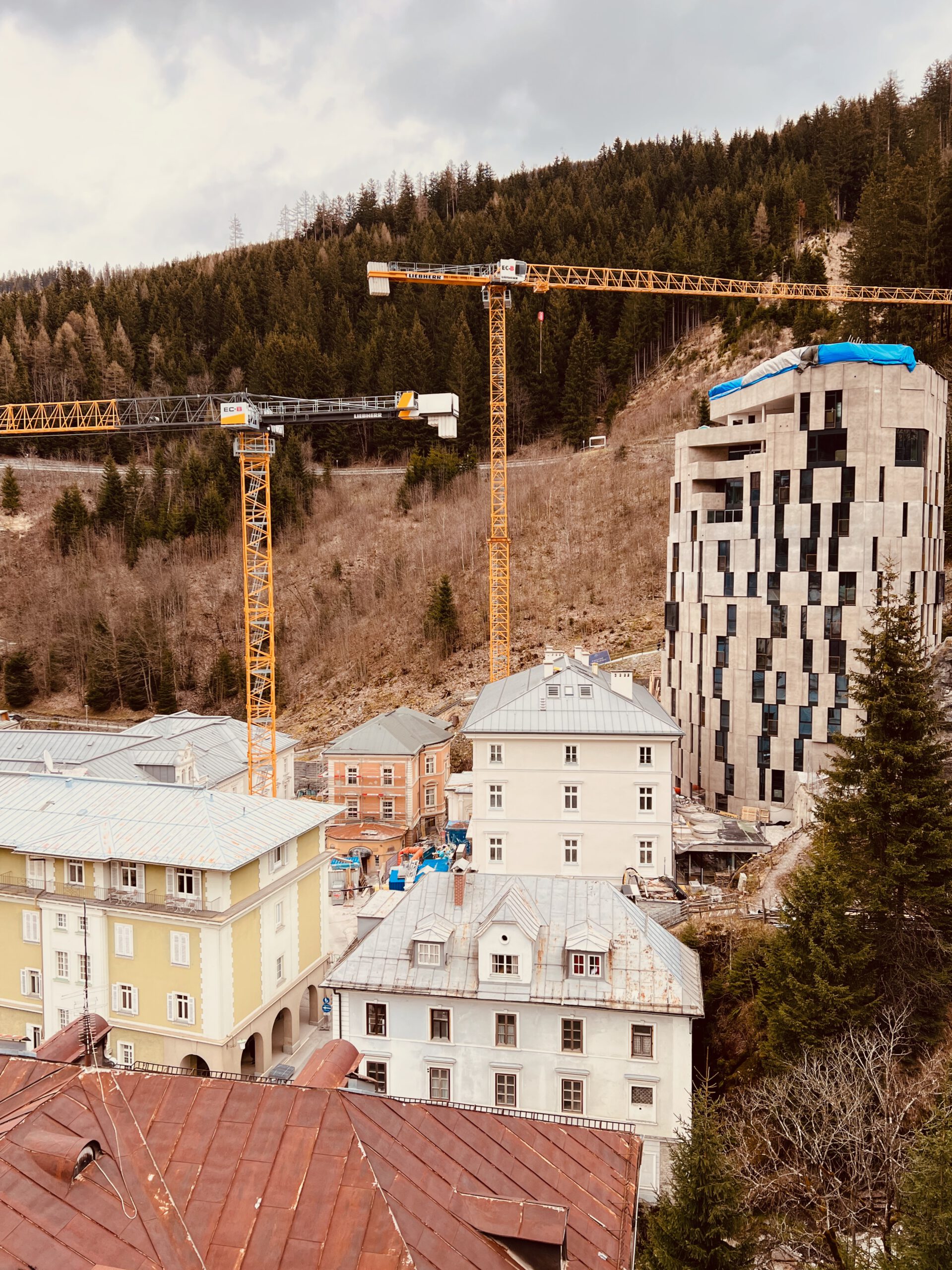
Because of the history of the place, many were sceptical. But three cranes are finally turning at Straubingerplatz. Where spa guests once strolled, construction workers now hurry around.
A lot is happening at Straubingerplatz in particular: the listed ensemble of Hotel Straubinger, Badeschloss and Alte Post is to celebrate a comeback in summer 2023 after 24 years of vacancy. After many empty promises and failed plans, the province of Salzburg acquired the buildings in 2017 and finally sold them to the Hirmer Group.
After renovation and conversion, the Badeschloss, which will get a new 14-storey tower embedded in the alpine backdrop, will have about 100 rooms. The five-star Hotel Straubinger will have just under 50 rooms in future and will be redesigned close to the original style.
.
The name Duval is still on everyone’s lips in Bad Gastein. Franz Duval’s son, Philippe Duval, still owns two huge buildings in the centre of the town and thus a large part of the vacant commercial space: Haus Austria and the huge congress house from the 1970s, which still divides opinion today with its brutalist design. There would be room here for shops, events and art, many think. But it takes imagination to picture it. The window panes in both buildings were covered with white foil a long time ago.
When asked, Philippe Duval sends a link to his website, the Gasteins Historic City. For years he has wanted to build a cable car from the Kongresshaus to the middle station of the Stubnerkogel cable car, but there has been no communication with the municipality. Nevertheless, they are optimistic that sooner or later there will be movement on the issue of the congress centre.
There is another problem child: the Viennese investor Christian Ebner has bought the empty Mirabell Kurhaus with its Schönbrunn-yellow façade in 2019. Demolition work on a part of the building that is not listed dragged on, much to the displeasure of the municipality. Now the work has been done and a wooden fence has been put up, but it is not clear what will happen next. According to reports, the property is for sale.

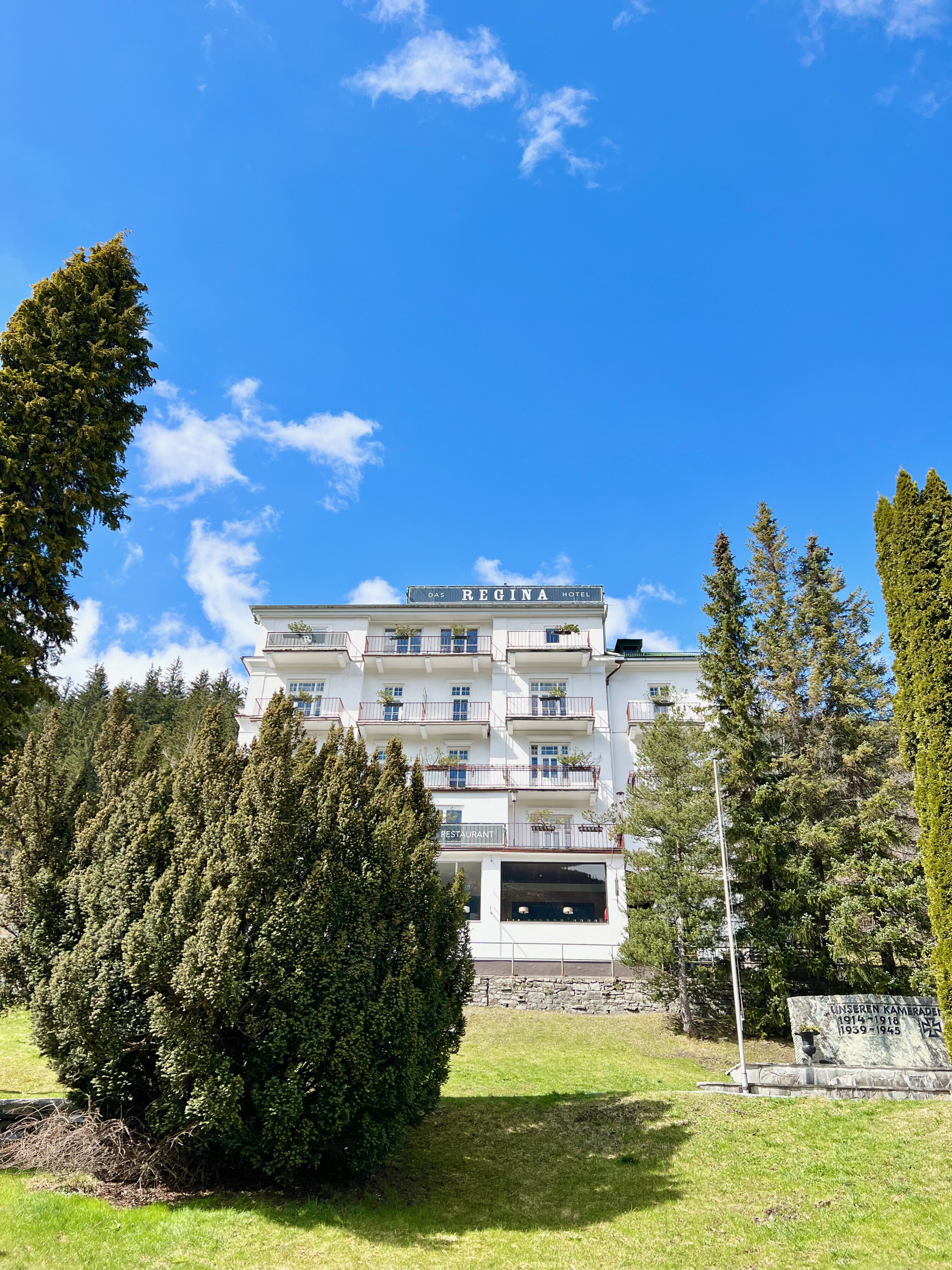
But the new spirit of optimism in the village has more to do than just cranes and demolition excavators. Well-connected hoteliers of a new generation, for example from the Hirt, Miramonte, Regina and the cōmodo hotels, have been developing visions of how the place should continue for years. One result is the summer.fresh.art festival, which has been bringing renowned artists to the place for twelve years.
New cafes such as the power station Kraftwerk Bad Gastein and stores such as Wally. or the KWP Concept Store have recently opened for a new audience.
That Bad Gastein has great potential can hardly be doubted. In the many empty hotels, which are not only due to the decline of spa tourism, but also to the failed strategy of making Bad Gastein a destination for congresses, there are, as always, also immense opportunities.
The future vision of Bad Gastein before your eyes, you stroll through the town. Enjoying the moment, the privilege of being able to move around in this provisional state. Knowing that Bad Gastein will probably not exist for much longer in this threshold state in which it finds itself today. As is so often the case, it is precisely the temporary nature of the place that makes it so fascinating.
The power stationKraftwerk Bad Gastein,, built in 1914, is one of the oldest in the province of Salzburg.
It was shut down in 1996. Today, parts of the power station are listed buildings,
the 2 mighty Francis turbines now serve as an imposing interior.
In the midst of the technical facilities, you can eat and drink in a colourful lounge landscape.
The new restaurant in the power station, which opened in May 2016, offers a very special ambience in a unique location.
in a unique location: situated at 985 m above sea level, directly at the foot of the mighty Bad Gastein waterfall!
Along a metre-high wooden wall, which tames the ionised water dust of the thundering waterfall,
sun loungers invite you to pause and enjoy this unique place of power.
A further 80 terrace seats are available for dining.

